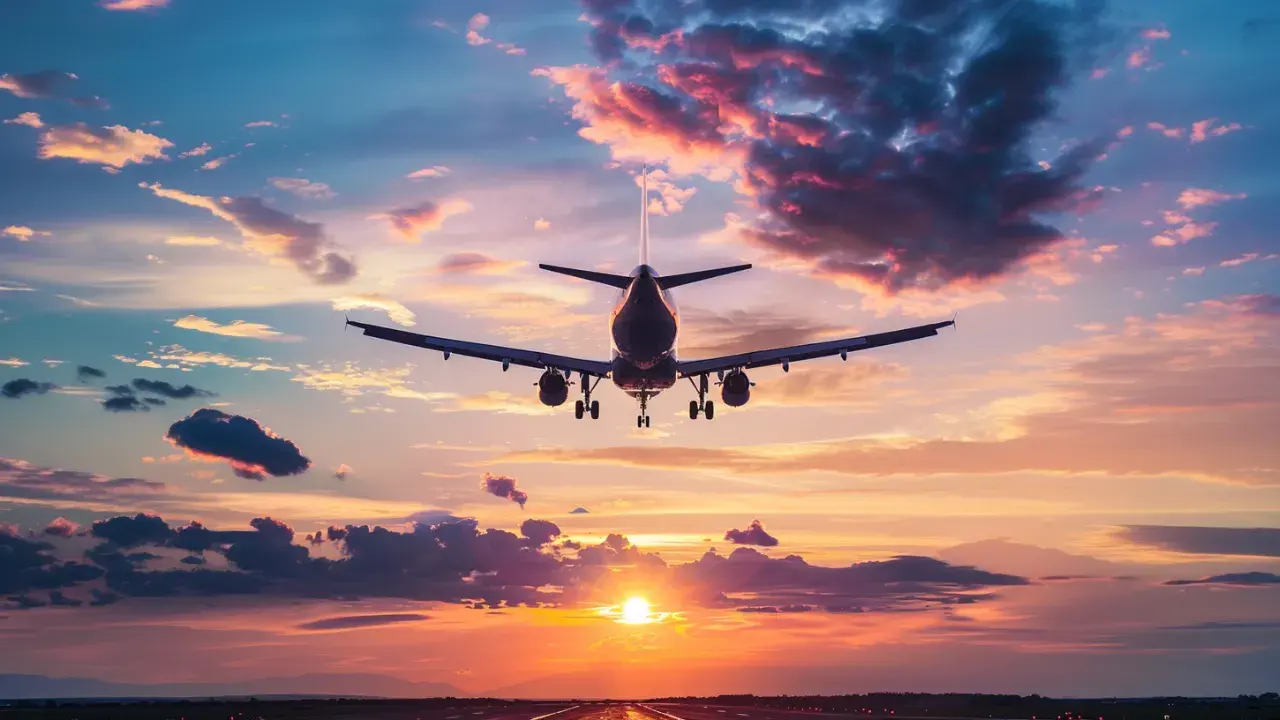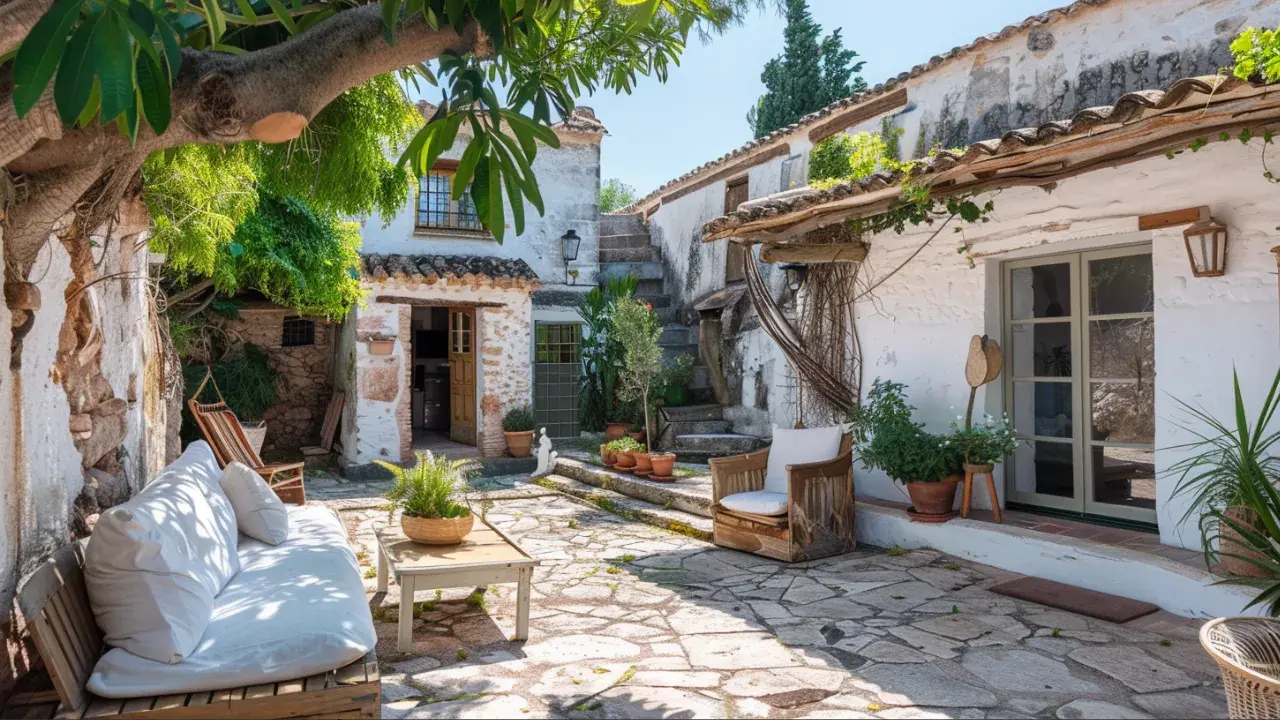How to Travel Cheap? An Easy Guide
• Posted July 3 • 2024.
We all always have the desire to travel, to discover new places or return to those we greatly enjoy or that hold a special meaning for us. However, we don't always have the budget to travel whenever we want or to wherever we want. Nonetheless, it is possible to save money on each of our trips and thus achieve our goal of visiting that dream destination. Here's an easy guide on how to travel cheaply.
You might also be interested in:
Flexibility in Travel Dates
Traveling Off-Peak
If you can travel during a destination's low season, this offers many advantages that are often overlooked in our rush to take advantage of vacations during the most popular times. Of course, the main advantage is the economic savings, as it is during these less demanded months that airlines and hotels often greatly reduce prices to attract more visitors and compensate for the low demand. This immediately translates for you into significant savings on both flights and accommodations, and you can use it from the start to be able to go to that destination or to extend your stay or experience additional experiences.
Another huge advantage of traveling off-season that can considerably enhance your travel experience is the decreased number of people you will find at your destination, especially if it is a very popular one. These places, normally crowded during peak seasons, become quieter, more accessible, and thereby more enjoyable. This can mean, for example, less time spent in line for tourist attractions and more time enjoying each moment. For someone who, like me, has lived in Mexico and experienced the tranquil beauty of places like La Paz in Baja California outside of the high tourist seasons, I can assure you that the peace and serenity enjoyed is incomparable. Of course, when the destination receives less tourism, restaurants, attractions, and the like, also tend to lower prices or offer many promotions in order to attract customers, and this then is an additional saving.
Flying on Less Busy Days
One of the simplest and most obvious strategies to save on travel, especially on flights, is to opt for traveling during the middle of the week. Typically, flights on Tuesdays, Wednesdays, and Thursdays are cheaper compared to those scheduled for the weekends. This price difference is due to the lower demand for flights during the weekdays, as most people tend to travel for leisure during the weekend, and many business travelers usually start and end their trips at the beginning or end of the work week, leading to higher prices on Mondays and Fridays. For example, flights around major holidays such as Thanksgiving, Christmas, or the Fourth of July can be particularly costly in the U.S. In Mexico, similar peaks in airfares can be observed during national holidays like Holy Week or the Christmas period.
On the other hand, traveling midweek not only benefits your wallet but also significantly enhances your travel experience. This is because airports are normally less crowded, which reduces the time you spend at security checks or airline counters. Therefore, considering a midweek departure could be a great idea to stretch your travel budget further while enjoying all the wonders your destination has to offer.
Compare and Use Online Resources
Using Price Comparison Tools
A fundamental tool for any traveler looking to stretch their budget is online price comparison platforms. Notably, platforms like Skyscanner, Google Flights, and Kayak have revolutionized the way we plan and budget our trips, providing a quick and easy way to compare flight and destination prices among different airlines and accommodations. Without getting into technical details, these sites function as data aggregators that search and list flight options based on specific search criteria, such as travel dates, destinations, number of passengers, and more.
To travel cheaply, one must take advantage of the primary benefit of using these comparators, which is economic savings. With just a few clicks, you can obtain the best deals and options for your dream destination, allowing you to choose the option that best suits your budget and needs, not only for flights but also for accommodations. At this point, it's important to mention that it's possible to obtain lower prices for lodging and flights if you are flexible with taking flights with layovers or staying in a small hostel rather than a luxurious resort, all depending on your desires, needs, and of course, your travel budget. Moreover, many of these sites offer price alerts, which will enable you to receive a notification on your email or phone when your flight, accommodation, or specific destination drops in price, allowing you to save even more.
Additionally, some of these sites also include options for car rentals and tourist experiences at the destination, such as tours, activities, and more, making it possible to plan your entire trip from one place. This integration not only simplifies the process of planning your trip but also allows you to increase savings compared to purchasing each item separately.
Affordable Accommodation
Alternative Accommodation Options
Airbnb has changed our mindset that to travel, it's always necessary to book a hotel room, preferably a luxurious one. However, now we know that exploring alternative accommodation options is undoubtedly an excellent way to reduce travel costs without sacrificing the quality of the experience. There are various options depending on our needs and type of trip, because traveling alone in our 20s where a hostel is the option is not the same as traveling with small children where certain amenities are indispensable. Let's look at some traditional and alternative lodging options:
Hostels: These places offer much lower rates compared to traditional hotels. Hostels are especially attractive to young travelers, who only need a bed to sleep in and don't mind sharing spaces with others, and in fact, seek to socialize with other tourists.
Short-term rental apartments: Platforms like Airbnb or Vrbo allow renting apartments, houses, or even individual rooms, most of the time at a lower cost than hotels and offering travelers an experience closer to the real life of the destination's inhabitants. This option is not only usually more economical but also allows for extra savings by cooking your own meals, which we all know drastically reduces the food expenses on your trip. Double savings, not bad, huh! Additionally, renting an entire house or apartment for a group of friends or family is also usually much cheaper than booking several hotel rooms.
Home exchanges: This is another creative, relatively new, and economical option to consider. This model allows travelers to swap their home with someone in another destination, thus eliminating the cost of lodging. Websites like HomeExchange facilitate these exchanges, ensuring that both participants agree on the terms and conditions of the swap.
Hotels: This option has been around forever and is quite straightforward; you book a room, pay for it, and depending on the payment you have made, the hotel may include the room, food, activities, transportation, etc. This option used to be practically the only one for most travelers, but now, with the competition from platforms, people can select from an even wider menu and thereby with various options to achieve significant savings on their trip.
Booking in Advance or Last Minute
When we're planning our trip, one of the most important decisions we can make to save money is when to book our accommodations and flights. This refers to booking in advance and last-minute deals, which are two opposite strategies that, depending on the situation, can result in significant savings.
Booking in advance: This is a classic tactic for those who prefer not only to have everything organized in time but also to achieve great savings by doing so. This option not only ensures availability and accessibility on flights and hotels, regardless of whether it's high or low season, but it also usually offers much lower prices. Almost always, airlines and hotels set lower prices for people who book months in advance, to ensure their cash flow throughout the year, thus allowing travelers to take advantage of this fact in our favor.
Last-minute offers: These deals are perfect for more adventurous travelers or those with flexible schedules. Often, tour operators, airlines, and hotels drastically reduce their prices as the departure date approaches and they still have spaces available. However, in this strategy, the destination can be surprisingly good or bad, so it is ideal for those who are very flexible with destinations and don't mind making plans on the fly. There is an episode of The Simpsons, "Thirty Minutes Over Tokyo," where the yellow family takes (or steals from the Flanders) an option for last-minute travelers and as shown there, they are willing to travel anywhere from Transylvania to Jamaica, eventually going to Tokyo.
Therefore, each method has its advantages and disadvantages. Advance booking offers a lot of security, peace of mind, and significant savings, while searching for last-minute deals is undoubtedly riskier but exciting. Therefore, it's important to consider what type of traveler you are and what kind of trip you are looking to undertake to choose the option that best suits your needs and preferences.
Local Transportation
Using Public Transportation
Not everyone can afford to rent a limo at their travel destination, which is quite obvious. Therefore, using public transportation at travel destinations offers several advantages, with the most evident being significant cost savings. Before arriving at our destination, it is advisable to research the available transportation options, such as buses, trains, subways, or even trams. These transportation systems are always cheaper and also provide a more authentic insight into the daily life of the area. This doesn't mean we should disregard systems like Uber, especially in economical destinations like Mexico or Colombia, where Uber rides are often quite affordable, safe, and comfortable.
Renting Bicycles or Walking
On the other hand, renting bicycles or simply opting to walk are pleasant, healthy, and economical ways to explore a destination, especially if the area is friendly to these types of activities. Many cities offer bicycle rental systems with pickup and drop-off points conveniently located throughout key areas, allowing you to explore and get to know them without worrying about returning the bicycle to the starting point.
Walking is, of course, the most economical option, but it is also often the richest in experiences. When walking, you can take the time necessary to really observe, appreciate, and absorb the ambiance of the place and the people, in addition to stopping at any site that captures your interest without any rush other than your own pace. Walking in a tourist destination and getting to know it this way is simply beautiful, as long as the distances and safety of the destination allow it.
Food and Activities
Eating Like a Local
We all agree that one of the best ways to truly immerse yourself in the culture of a place is through its cuisine. Well, avoiding tourist-oriented restaurants and instead going to places where locals usually eat will first and foremost generate significant economic savings as well as a much more authentic and genuine culinary experience. Places frequented by residents will always have dishes that truly reflect the real cuisine and the true flavor of the location. However, be cautious with spicy or heavily seasoned food.
At this point, we would like to revisit something we wrote above. If possible, cook during your trip; this way, you'll save a lot of money and not only that, if you have a delicate stomach, you'll avoid interacting with spicy seasonings and fats that you're simply not accustomed to. In other words, if you can cook on your travels, you will save money and maintain your diet if that is something you need.
Engaging in Free Activities
In almost all cities around the world (at least the civilized parts), there are always free activities available that offer an excellent way to enjoy your trip without overspending. Many cities offer a variety of attractions at no cost, such as museums with free admission days, guided city walks, free access to national parks on specific days, free entry to art galleries, among other options. Before heading to your destination, it is always advisable to find out about the free options your next destination offers.
For example, many European capitals like Paris or London offer free access to their main museums once a month, an opportunity that no history or art enthusiast should miss. Similarly, in cities like San Francisco, free guided walks by local volunteers who are eager to share their knowledge and love for their city are offered. In Mexico City, free entries to countless exhibitions or art galleries on certain days are available.
In conclusion, traveling cheaply is not something impossible to achieve if we have certain flexibilities, and I believe that is the main key, flexibility. Being flexible with the days, flights, accommodations, meals, and other aspects, according to our tastes, needs, and budget, will allow us to better answer the question How to travel cheap? Traveling within a budget is relatively easy to achieve, as we have noted in this article, we just need to adapt to a trip with certain flexibilities, and voila!
To see more amazing pictures and leave a comment, go to the Pinterest board for this article: Click

Tastes of La Paz.






